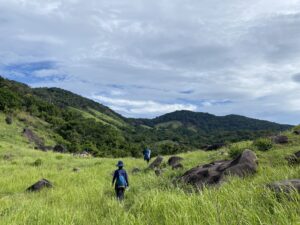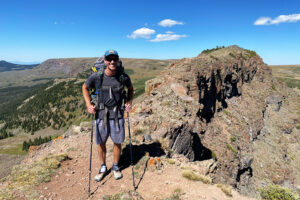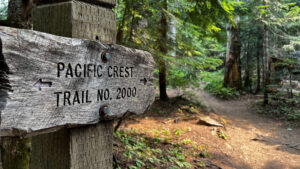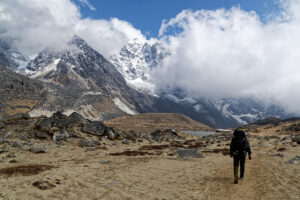
The Great Trail, also known as the Trans Canada Trail.
In early 2019, Sonja Richmond and her partner Sean Morton from Ontario will embark on a three-year journey along Canada’s 24,000km Great Trail. The longest recreational trail in the world, it links all three coasts and includes a 6,000+km loop into the Northwest Territories. The couple will start at Cape Spear, Newfoundland, the easternmost point of Canada, and continue west to Victoria, British Columbia before turning north.
The Great Trail, formerly known as the Trans Canada Trail, took 25 years to complete and was only fully connected in 2017. It links over 400 individual trails and 15,000 communities across Canada.
Since its completion, foot travellers from around the world have come to Canada to tackle this supreme hiking challenge. Recently, Dana Meise of Alberta became the first to complete the entire route. It took him 10 years. Before him, Sarah Jackson was the first woman to finish the trail’s east-west section, while Melanie Vogel of Germany is currently thru-hiking the entire trail on her own.
Faced with a three-year absence from gainful employment, and no sponsors as yet, Richmond and Morton have had to make difficult financial decisions. They have placed their home on the market, set a daily budget of $20 a day and have been scrambling to find last-minute sources of gear or donations — as yet unsuccessfully. Their current budget affords them a basic diet of “coffee, sugar and plain oatmeal for breakfast, a simple wrap or peanut butter sandwich for lunch, dehydrated rice and beans or pasta for dinner, and tea.” They hope to round up enough support at least to add some trail mix and energy bars to their diet.
They plan to carry backpacks with tents, sleeping bags, pot and stove, water bottles and a filter, two changes of clothes, Therm-a-Rests and two to five days of food. Because the trail frequently passes through or near communities, they can reduce their weight by shipping backup gear and winter clothes to local post offices, and stocking up regularly at grocery stores. Still, Sonja Richmond estimates that their pack weight will increase to 23 to 33kg in winter. “In the Prairies and up north, we may switch from backpacks to carts,” says Richmond.
Before this expedition, Richmond completed her PhD in forestry at the University of Toronto, while her partner is a freelance photographer and writer. Richmond currently works as an analyst at Bird Studies Canada. En route, the couple hopes to raise awareness of the birds of Canada.
The Great Trail consists of roadways, greenways, lakes and rivers, mountains, islands and tundra. The trail combines wilderness and rural portions but also major cities such as Montreal and Toronto. This varied landscape offers travellers a choice of transportation: bicycles, kayaks or canoes, even horses. Some parts can only be negotiated by watercraft.

The Great Trail consists of smaller trails like the BLT trail. Photo: Mother Nature Network
Because of their shoestring budget, the couple lacks a packraft or canoe and will detour around rivers and lakes until their third year. By then, they hope to acquire the means to paddle the fluid sections of trail.
Their stories and photos will appear on their Facebook page, Come Walk With Us, and their website.






